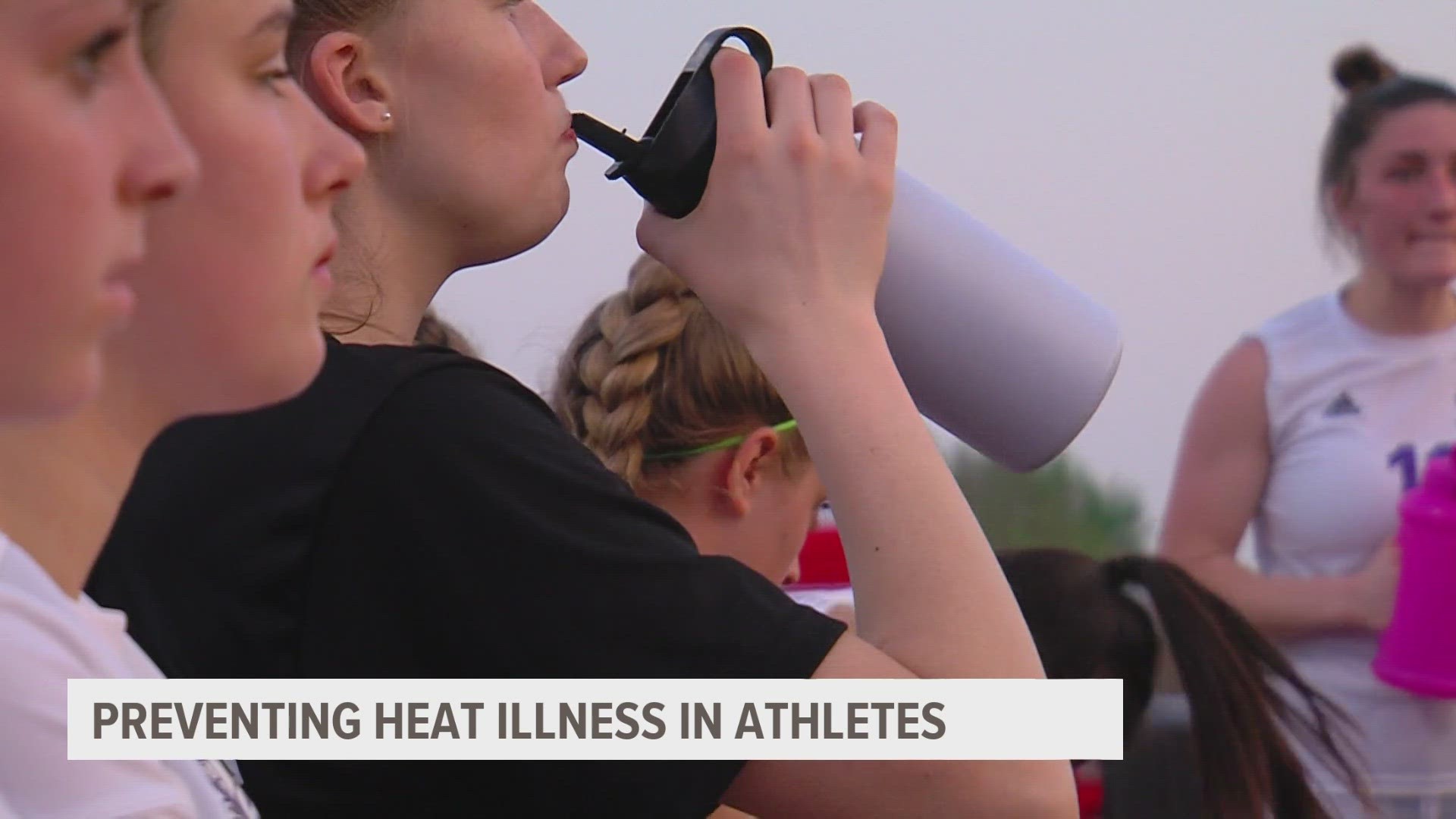URBANDALE, Iowa — The recent heat wave in Iowa has caused teams to reschedule their practices and games to cooler times of the day.
It may seem obvious why teams are taking these precautions, but sometimes the seriousness of heat illness can get overlooked, according to athletic trainer Troy Kleese with UnityPoint Health Sports Medicine.
Kleese said even when practices and games are moved to different times, there are still other steps that should be taken to ensure athletes' safety.
That includes staying hydrated, getting plenty of breaks, having ice tubs or coolers nearby and keeping an eye on athletes who display any signs of heat illness.
"Coaches have become a lot more educated and athletic associations have provided more information," Kleese said. "A lot of schools have sports medicine processionals or athletic trainers on the sidelines to help guide the care and planning for those situations to have it be prevented."
There are different types of heat-related illnesses: heat stroke, heat exhaustion and heat cramps. Here's how you can identify each, according to the CDC.
Signs of heat stroke
- High body temperature (103°F or higher)
- Hot, red, dry, or damp skin
- Fast, strong pulse
- Headache
- Dizziness
- Nausea
- Confusion
- Losing consciousness (passing out)
Signs of heat exhaustion
- Heavy sweating
- Cold, pale, and clammy skin
- Fast, weak pulse
- Nausea or vomiting
- Muscle cramps
- Tiredness or weakness
- Dizziness
- Headache
- Fainting (passing out)
Signs of heat cramps
- Heavy sweating during intense exercise
- Muscle pain or spasms
Kleese said it's also important for athletes to continue hydrating once they get home from practice and to cool off so that their bodies can fully recover.

